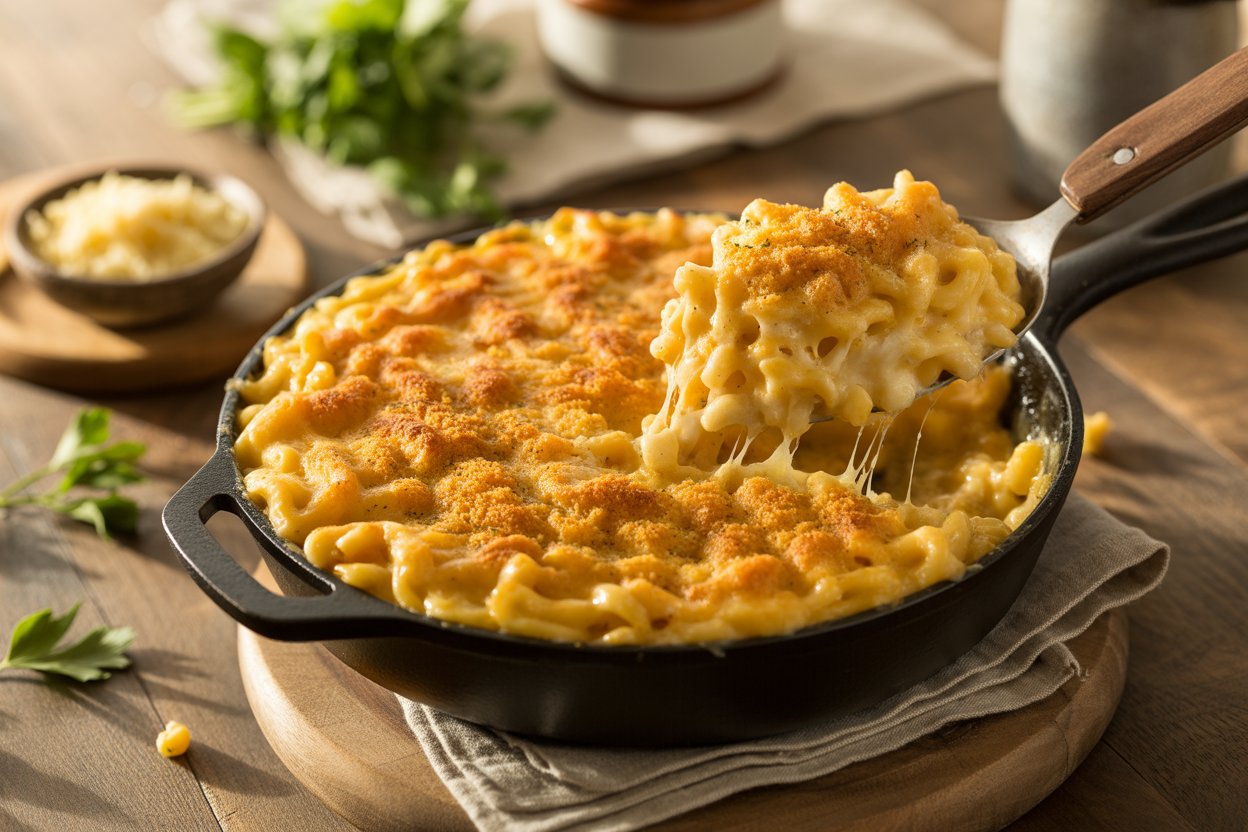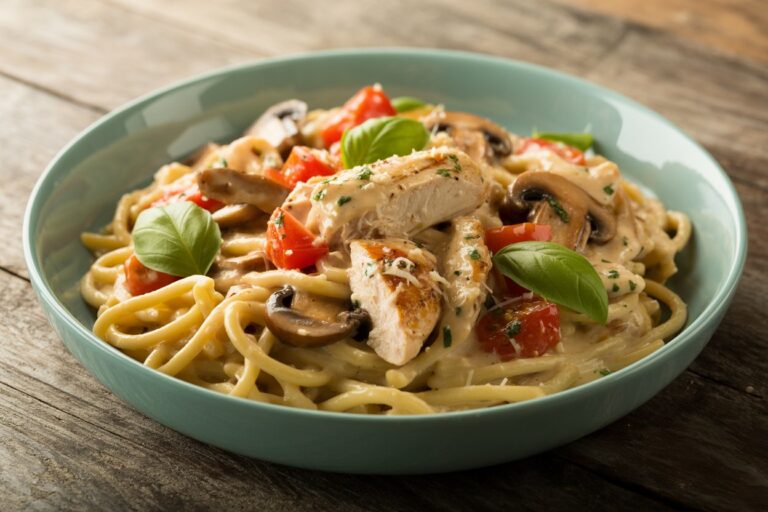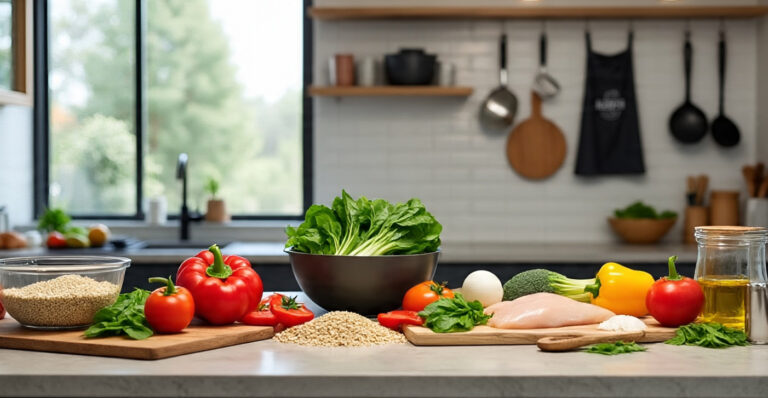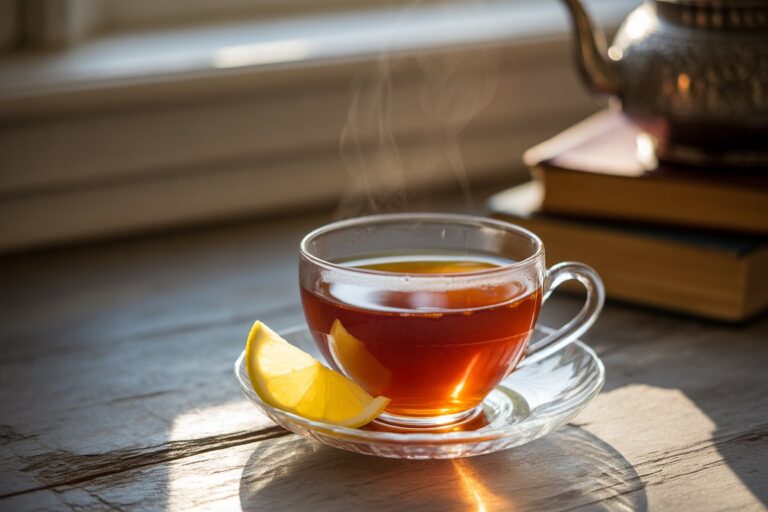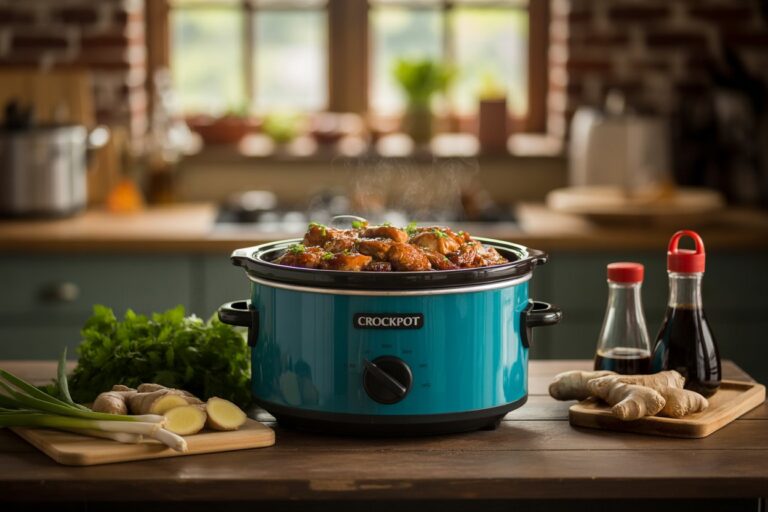Mac and Cheese Recipe Baked Creamy Perfection
Baked mac and cheese is a classic comfort food that combines creamy cheese sauce with tender macaroni pasta and a crispy topping. It offers a simple yet satisfying way to enjoy macaroni and cheese that is both rich in flavor and texture. A great Mac and Cheese Recipe Baked balances creamy, cheesy sauce with perfectly cooked pasta and a crunchy breadcrumb topping for the ideal meal.

This dish uses a cheese sauce made from butter, flour, and milk, melted with a blend of cheeses like cheddar, Gruyere, or mozzarella to create a smooth, flavorful sauce. The macaroni is cooked just right and often tossed in butter to prevent it from becoming soggy during baking. Once combined, the mixture is baked until bubbly and golden on top.
Baked macaroni and cheese works well as a main dish or a hearty side. It can also be customized with add-ins like bacon, herbs, or vegetables for extra flavor. For those looking to try a reliable recipe, there are many variations that focus on keeping the pasta tender and the sauce creamy, making it a go-to option for both family meals and special occasions. Learn how to make a classic baked mac and cheese that’s simple, delicious, and comforting. For a complete guide, see this detailed baked macaroni and cheese recipe.
Ingredients For Mac and Cheese Recipe Baked
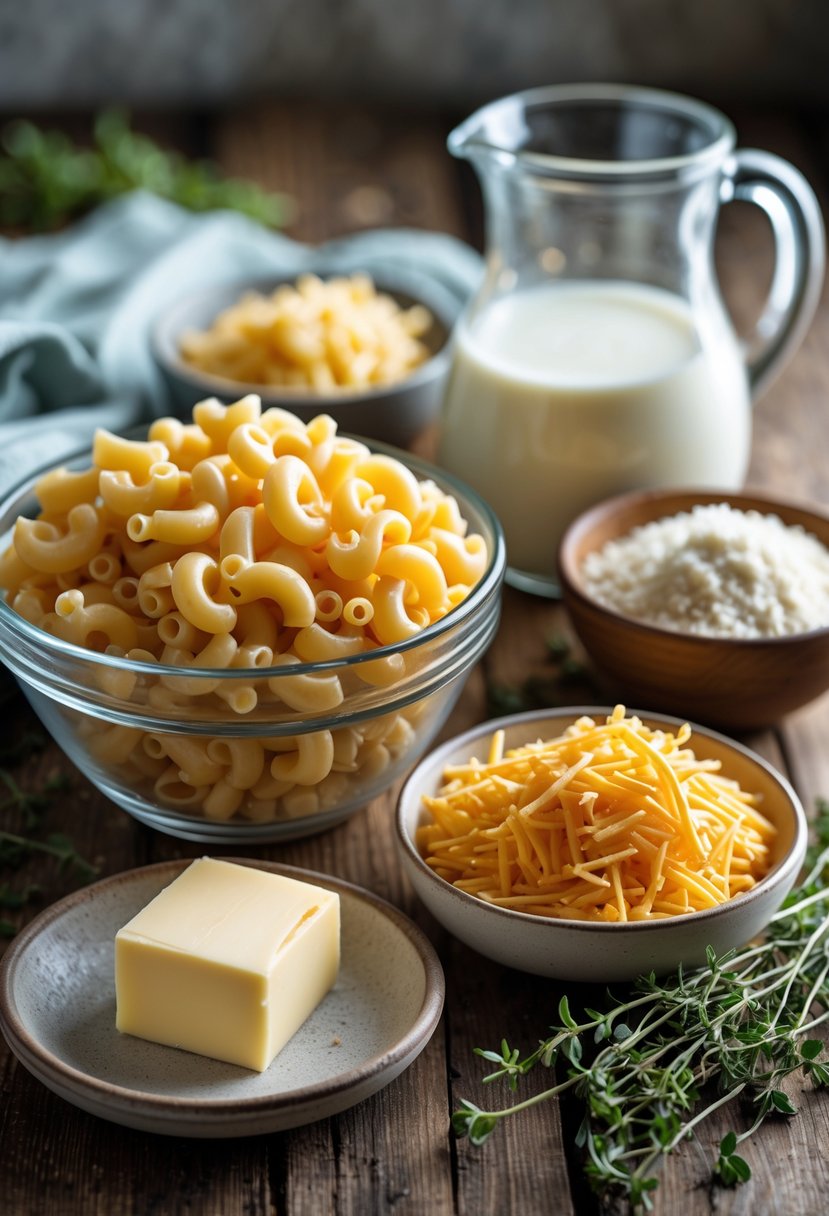
A great baked mac and cheese depends on a few key ingredients that work together for the best texture and flavor. The pasta shape, types of cheese, and creamy base made from milk and butter are the foundation. Getting these right makes sure the dish holds sauce well, melts smoothly, and tastes balanced.
Choosing the Right Pasta Shapes
Elbow macaroni is the classic choice for baked mac and cheese. Its curved shape holds cheese sauce well inside, giving every bite a creamy texture. Other good options include small penne or macaroni noodles, which also trap sauce in their tubes or curves.
The pasta should be cooked al dente before baking. This ensures it absorbs some sauce during baking without becoming mushy. Overcooked pasta will lose structure, making the dish watery. Larger shapes like penne can give more bite, while elbow pasta remains tender and familiar.
Cheese Selection and Combinations
Sharp cheddar cheese is essential for flavor. It has a strong, tangy taste that stands out and melts into a rich sauce. Combining cheddar with milder cheeses like Monterey Jack or mozzarella balances sharpness with creamy texture.
Shredded cheese melts quicker than grated cheese, making it easier to create a smooth sauce. Using a mix of cheeses improves meltability and taste. Monterey Jack adds softness, while mozzarella helps make cheese strands when serving. A good recipe might use half sharp cheddar and half a blend of other cheeses.
Milk and Butter for Creaminess
Whole milk or evaporated milk is best for a creamy sauce because it adds richness without being too thin. It blends well with butter to create a smooth base for the cheese sauce.
Butter is melted first to make a roux with flour, which thickens the sauce. The butter also enriches the dish with a mild, smooth flavor. Using the right amount of butter prevents the sauce from being greasy or dry. Together, milk and butter make the cheese sauce creamy and stable during baking.
Step-by-Step Method: How to Make Baked Mac and Cheese

Baked mac and cheese starts with perfectly cooked pasta and a rich, creamy cheese sauce made from a roux base. Then, layering and baking bring the dish together, creating a bubbly, golden top. Attention to each part ensures a smooth sauce, tender pasta, and a balanced bake.
Cooking the Pasta
The pasta must be cooked al dente to hold its shape during baking. Typically, elbow macaroni or similar short pasta works best. Bring a large pot of salted water to a boil, then add the pasta.
Cook it according to the package instructions, usually around 7 to 8 minutes, until firm but fully cooked. Drain thoroughly to avoid excess water, which can thin the sauce. Set the pasta aside while the sauce is prepared.
Making a Creamy Cheese Sauce
Start by making a roux, melting butter in a saucepan and whisking in an equal amount of flour. Cook this mixture briefly to remove the raw flour taste, about one minute.
Gradually add warm milk or evaporated milk, whisking constantly to avoid lumps. Bring the mixture to a gentle simmer, stirring until it thickens.
Once thickened, add a combination of cheeses like sharp cheddar, Monterey Jack, and cream cheese for creaminess. Whisk each handful of cheese into the sauce until melted before adding more. Season with salt, garlic powder, and paprika for flavor. This smooth sauce coats the pasta evenly.
Layering and Baking Techniques
Preheat the oven to 350ºF and grease a 9×13-inch baking dish. Mix the cooked pasta with half of the cheese sauce in a large bowl. Spread this mixture in an even layer in the dish.
Sprinkle half of the remaining shredded cheese on top. Pour the rest of the cheesy pasta and sauce over this layer and finish by topping with the rest of the cheese for a golden crust.
Bake uncovered for 20 to 25 minutes, or until bubbly around the edges and the cheese browns slightly. For extra crispiness, broil for 1 to 3 minutes but watch closely to avoid burning. Let it rest for 10 minutes before serving.
Tips And Variations

Baked mac and cheese can be tailored with simple techniques and ingredients to improve texture and flavor. Choosing the right crunchy topping, adding spicy or savory elements, and incorporating popular mix-ins all help to make this dish more interesting and satisfying.
Achieving the Perfect Crunchy Topping
A crisp topping adds texture and contrast to baked mac and cheese. The best way to create this is by mixing breadcrumbs or panko with melted butter. This mixture should be spread evenly over the dish before baking.
For extra flavor, sprinkling paprika or grated Parmesan cheese into the topping can give a subtle smoky or cheesy note. Baking the dish at 350°F to 375°F until the crust turns golden brown ensures a crunchy finish.
Using panko breadcrumbs results in a lighter, crunchier crust compared to regular breadcrumbs. This step should not be skipped, as the topping prevents the dish from feeling too creamy or dense.
Spicy and Savory Flavor Boosters
Adding heat can enhance the richness of baked mac and cheese. Hot sauce is a simple way to introduce a spicy kick. It can be stirred into the cheese sauce or drizzled on top after baking.
For deeper savory flavor, chili powder or smoked paprika can be mixed into the sauce or sprinkled on the topping. These spices bring warmth and complexity without overpowering the cheesy base.
Some recipes incorporate cooked bacon or even diced jalapeños to add boldness and texture. This variation, sometimes called chili mac, combines the comfort of mac and cheese with a spicy, smoky profile that appeals to many.
Popular Mix-Ins and Toppings
Protein and vegetables are common add-ins to increase fullness and variety. Crumbled bacon, diced ham, or shredded chicken mix well with the cheese sauce, boosting the dish’s heartiness.
Vegetables like roasted broccoli, caramelized onions, or sautéed mushrooms offer both nutrition and flavor contrast. Adding these before baking ensures they meld well with the cheese and noodles.
For more luxurious versions, seafood such as lobster or crab can be stirred in gently. Finally, layering extra shredded cheeses on top before baking helps develop a melty, golden crust that enhances both taste and look.
Serving, Storage, and Make-Ahead Advice

Baked mac and cheese works well as a hearty main or a rich side dish. Proper storage keeps its creamy texture, and make-ahead steps help save time without losing flavor. Reheating should restore its warmth and creaminess without drying it out.
Best Sides and Occasions
Baked mac and cheese pairs well with roasted vegetables, green salads, or simple steamed broccoli. It complements dishes like grilled chicken or baked ham.
It fits holiday meals such as Thanksgiving or Easter and suits casual family dinners. For larger gatherings, doubling the recipe and baking in multiple pans ensures enough for everyone.
Adding a crisp side balances the creamy, cheesy texture. Simple sides like garlic bread or coleslaw can also work to provide variety and freshness on the plate.
Storing and Reheating Leftovers
Store leftover baked mac and cheese in an airtight container in the refrigerator. It remains good for 3 to 5 days.
Reheat in the oven at 350°F until warmed through, about 20 minutes. Cover with foil to prevent the top from drying out. Microwave reheating is faster but can dry the dish; adding a splash of milk helps keep it moist.
Stirring during reheating helps heat evenly. The sauce should be creamy, not dry or separated after warming.
Freezing and Make-Ahead Tips
Baked mac and cheese can be made in advance and frozen for up to three months. Prepare the dish fully, then cover tightly with plastic wrap and foil before freezing.
Thaw overnight in the fridge before baking. Bake at 400°F for 40-45 minutes or until hot and bubbly. Cover with foil if browning too fast.
Make-ahead prep reduces mealtime stress, especially for holidays or busy nights. Double or triple the recipe for parties, knowing thicker layers may need extra bake time to heat through.
For detailed make-ahead instructions, see this Make-Ahead Mac and Cheese recipe.

